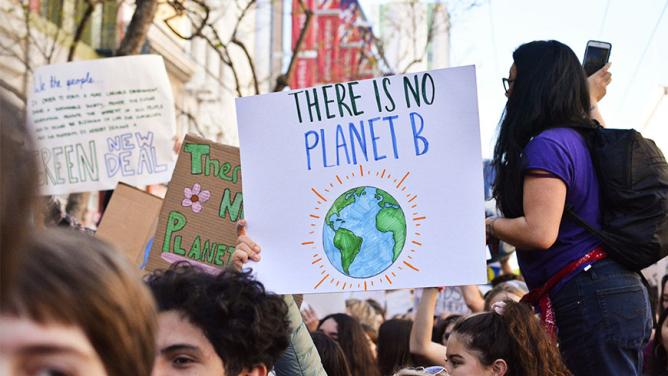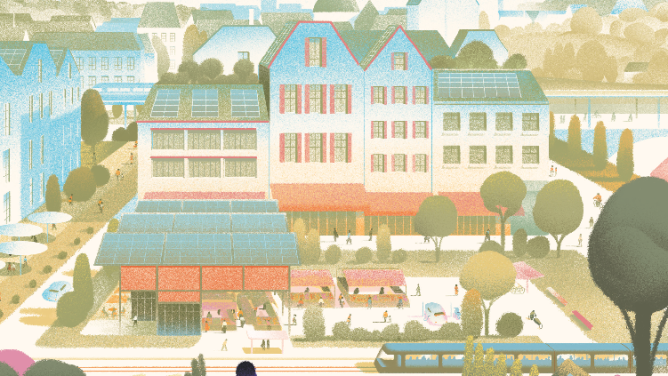More than half of the population now lives in urban areas, with this figure likely to grow to 70% by 2050. Rapid urbanization coupled with the climate emergency entails new risks for urbanites. Leading the pack is natural disasters, which are going to increase in number as global warming continues.
Since 1992, the number of people affected by a disaster has risen to 4.4 billion (that’s 64% of the world’s population). Meanwhile, the economic damage has amounted to around $2 trillion (which is the equivalent of 25 years of Official Development Assistance). It can take cities affected by major disasters, such as New Orleans, more than 10 years to return to normal.
Urban resilience: central to counteracting the climate emergency
Scientists describe this ability to return to a steady-state or equilibrium after a shock as the concept of resilience. The term originated from the field of psychology and was first adapted to the world of ecology by Canadian ecologist Crawford Stanley Holling in an article published in 1973.
In an urban context, climate resilience is defined as the ability of a city and its residents to cope with crises and their impact and to anticipate a response to extreme climate disasters (heatwaves, flooding, heavy downpours, droughts…) by adapting infrastructure and the way things are run.
Architect Marco Stathopoulos detailed back in 2011 (who is now a member of the Groupe d’études et de recherches philosophie, architecture, urbain research group) in his article Qu’est-ce que la résilience urbaine? (“What is urban resilience?”, Revue Urbanisme n°381):
“Unlike a stable, secure, hierarchical, optimized and standardized city so cherished by sustainable development, the resilient city is flexible and transformable. It operates as a heterarchy (a system of organization that promotes cooperation and relationships between its members, rather than a bottom-up structure), reduces dependency, and increases networks and redundancy between different functioning scales. Risk is one of the founding principles, so too are the resources it can generate…. In every crisis lies opportunity.”
As extreme weather linked to global warming is on the increase and intensifying (the latest IPCC report is especially alarming), the concept of urban resilience is being studied in-depth, emerging as the main focus for ideas for future urban populations. Back in 2018, La Fabrique de la Cité dedicated an entire report to the topic, highlighting the importance of managing infrastructure networks and population change. Meanwhile, Leonard produced an Emerging Trends report, giving way to thoughts on designing and building climate-resilient infrastructure, along with ideas from a working group initiated by the VINCI executive board and dedicated to the challenges of infrastructure resilience when threatened by the impact of climate change.
Resilience a main player in urban policy
Along with these reports on how to integrate the concept, the notion of resilience has gradually become part of city development strategies. In 2013, The Rockefeller Foundation led the way with the 100 Resilient Cities initiative, aimed at developing a network of 100 cities with the financial, logistical, and operational resources to increase their resilience. Out of the thousand cities that applied only 100 were selected – representing one-fifth of the world’s population. A total of nearly $655 million was raised from public, private, and charitable organizations, to set up urban resilience projects and pool proven solutions to cope with stresses such as water scarcity (Cape Town, Chennai, Santa Cruz) or weakening infrastructure (Miami).
UN Habitat also works with local governments and their partners to help cities improve their resilience to the impact of natural and man-made disasters. The initiative is split into several sections and includes its City Resilience Profiling Tool, which follows a holistic, people-centered approach for assessing the city as a whole from a resilience perspective. Meanwhile, the Urban Resilience Hub provides governments with space for knowledge, a set of best practices, and innovations to flourish.
With offices in France and North America, the Climate City initiative helps cities adapt to climate change by offering a system that monitors in real-time different factors to anticipate air pollution peaks, heatwaves, and natural disasters. It relies on its “Climate Birds”, a network of drones and tethered balloons embedded with sensors that fly above cities capturing local data.
As for Paris, back in 2015, it was one of the first global metropolises to adopt an “Adaptation Strategy” to respond to risks, appointing a Chief Resilience Officer responsible for working with all concerned services to implement public policy likely to protect the city from present and future shocks.
Resilience soon to be integrated into law
In France, the concept of resilience will now be an integral part of official laws. On May 4th, the National Assembly adopted at first reading the Climate and Resilience law. The bill was inspired by proposals from 150 citizens who were chosen at random from the Citizens’ Climate Convention and is meant to reduce greenhouse gas emissions by 40% by 2030 compared to 1900 levels – a target that’s likely to be revised upwards as the EU committed to a 55% reduction over the same time period.
Several Green party elected officials and environmental NGOs have declared the law as too reserved compared to the scale of the climate emergency, and that the bill focusses more on mitigating global warming (measures in favor of renovating buildings classed as “energy sieves” or reducing the use of fossil fuels for heavy goods vehicles) rather than climate change adaptation measures, the most obvious of which seems to be the need for improved soil conservation. The law anticipates to half the rate of soil artificialization and land grab, especially by preventing shopping centers from being built in rural areas, which can help limit the effect of runoff during unexpected heavy downpours. It’s a modest step forward, but one marked by the effect of resilience in public rulings which set the framework for future developments in cities and regions.


